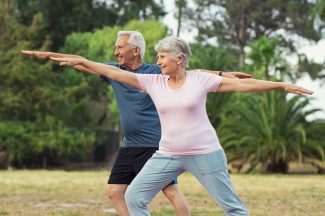
Falling down is the leading cause of injury and death by injury for adults over the age of 65 in the United States. Every second of every day, someone 65 or older in the U.S. suffers a fall which makes preventing older adult falls a public health concern. According to the Centers for Disease Control and Prevention, CDC:
- One in four older adults suffer a fall each year in the U.S.
- Approximately 36 million falls among older adults are reported each year
- Falls in older adults account for about 32,000 deaths each year
- At least 300,000 people over 65 are hospitalized for hip fractures every year
- About 95% of hip fractures are caused by falling, typically falling sideways
- Every 20 minutes, an older adult dies from a fall
Tips to Prevent Falling
There are many things that older adults can do to prevent falling. Experiencing a fall does not have to be a normal part of aging. Implementing simple fall prevention techniques could help you to maintain your health and independence for a longer and happier life. Here are some of the most important tips to prevent falls as published by the Mayo Clinic:
Talk to Your Doctor
Make an appointment with your doctor to start your fall prevention plan and be prepared to discuss any current health issues that concern you, details of feeling dizzy or falling down in the past, and a list of all medications to review. Make sure you have regular eye exams as vision problems increase your risk of falling. Ask about the need for a foot specialist or orthotic footwear.
Stay Active
Talk to your doctor about activities to keep moving such as walking regularly, swimming with water exercises, and something like tai chi that involves slow movements. Commit to a regular walking program and check with your local mall
as many open early just for older people to have a safe place to walk. This is very beneficial if you live in an area that gets cold and snowing in the winter. These activities improve strength, coordination, flexibility, and balance to reduce the risk of falling.
Wear Sensible Shoes
Make sure that you wear properly fitting, sturdy shoes with non-skid soles and avoid high heels, shoes with slick soles, stocking feet or floppy slippers.
Remove Hazards In Your Home
Remove all hazards that could cause a trip and fall including any clutter in hallways, the bedroom, bathroom, kitchen, and all rooms of the house.
- Remove any cords from walkways
- Remove any loose rugs from your home
- Repair any loose floorboards or carpeting right away
- Use nonslip mats in your tub or shower, and a bath seat to shower
- Keep all items within reach to avoid using a stepstool to reach things in high cabinets.
Keep Your Living Space Lit Up
keep your home lit up to prevent tripping over hard to see objects and use a nightlight in your bedroom, hallways, and bathroom. Keep flashlights handy in case of a power outage.
Utilize Walking and Steadying Devices
Use walking devices or install home assisted devices such as:
- Use a cane or a walker if needed
- Make sure that any stairways have handrails on both sides
- Install a grab bar in the shower or tub
- Use a raised toilet seat with armrests
- Have nonslip treads on any wooden steps
- Consider closing off any stairways and have just one floor for all living space
Remember that fall prevention can make the difference between independent living or requiring assistance. Be sure to speak with your physician about fall prevention strategies and discuss the need for an occupational therapist for a customized fall prevention plan. Falls do not have to be a part of aging.
Greater Waterbury Imaging Center urges you to speak with your physician about a fall prevention plan, for yourself or a loved one. A small investment into fall prevention is an investment in your future and independence. Contact us for all your MR imaging needs for friendly, compassionate, and professional care.


